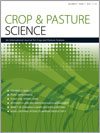Thermal imaging has been used to evaluate the response to drought and warm temperatures in a collection of Brachypodium distachyon lines adapted to varied environmental conditions. Thermographic records were able to separate lines from contrasting rainfall regimes. Genotypes from dryer environments showed warmer leaves under water deficit, which suggested that decreased evapotranspiration was related to a more intense stomatal closure. When irrigated and under high temperature conditions, drought-adapted lines showed cooler leaves than lines from wetter zones. The consistent, inverse thermographic response of lines to water stress and heat validates the reliability of this method to assess drought tolerance in this model cereal. It additionally supports the hypothesis that stomatal-based mechanisms are involved in natural variation for drought tolerance in Brachypodium. The study further suggests that these mechanisms are not constitutive but likely related to a more efficient closing response to avoid dehydration in adapted genotypes. Higher leaf temperature under water deficit seems a dependable criterion of drought tolerance, not only in B. distachyon but also in the main cereal crops and related grasses where thermography can facilitate high-throughput preliminary screening of tolerant materials.
How to translate text using browser tools
15 December 2015
Use of thermographic imaging to screen for drought-tolerant genotypes in Brachypodium distachyon
Magdalena Ruíz,
Miguel Quemada,
Rosa M. García,
José M. Carrillo,
Elena Benavente
ACCESS THE FULL ARTICLE

Crop and Pasture Science
Vol. 67 • No. 1
January 2016
Vol. 67 • No. 1
January 2016
abiotic stresses
high-throughput phenotyping
water deficit.




